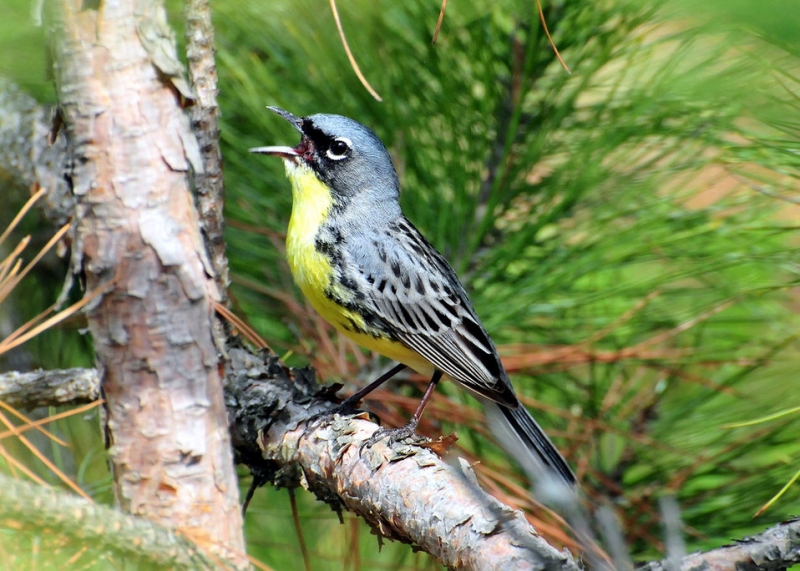Another member of the “Class of ‘67” has matriculated. On October 9, 2019, the Kirtland’s warbler, a colorful songbird, was declared by the U.S. Fish and Wildlife Service to have recovered and was taken off the federal endangered species list. The warbler is a member of the “Class of ’67,” a reference to the very first official list of endangered species published on March 11, 1967. It joins such fellow classmates as the American alligator, bald eagle, Delmarva fox squirrel, Aleutian Canada goose, Columbian white-tail deer, and gray wolf in having achieved this milestone.

The warbler is a migratory bird with a breeding range almost entirely restricted to the Lower Peninsula of Michigan. There, it nests in dense stands of young jack pine trees. Historically, there were many such stands as a result of frequent stand-replacing fires. By the middle of the 20th century, however, aggressive fire suppression efforts had made such habitats—and the warbler—increasingly rare. Key to the success in recovering this species has been the use of prescribed fire and other silvicultural practices to create more of the breeding habitat on which it depends, as well as measures to reduce nest parasitism by brown-headed cowbirds. Those efforts have worked dramatically well. A spring census of singing males in 1974 counted only 167 birds. By 2015, when the last rangewide census was taken, that number had increased to nearly 2,400.
There are at least three important lessons that can be learned from the warbler’s experience. The first is simply that recovery of once critically imperiled species is in fact possible. Being placed on the endangered species list is not, as some have maintained, a lifetime sentence. Indeed, the pace of recoveries and delistings is accelerating, with one-half of the nearly 50 delistings occurring in the past decade.
However, the important second lesson is that recovery will often require a sustained effort over many decades. There are no quick fixes. Conservation concern for the Kirtland’s warbler had begun even before the publication of the 1967 list. State and federal agencies began to monitor its population in 1951, nearly 70 years before it was declared no longer endangered. Other “Class of ‘67” species that are still on the endangered list have even longer histories of conservation effort. Efforts to avert the loss of the whooping crane, for example, began in the 1940s, when there were fewer than 20 birds. Those efforts have succeeded in increasing the population of cranes and making that species’ future more secure, but recovery and delisting are likely still decades away.

The third lesson to be learned from the warbler is that, despite its delisting, it will still need conservation attention. Its recovery does not mean that it is now on its own and can safely be forgotten. Rather, it is what has sometimes been called a “conservation-reliant” species. That is, like many other once-endangered species, it will rely upon conservation efforts from sources other than the Endangered Species Act, such as continued favorable management of the three national forests where much of the warbler’s habitat exists.
Real progress is being made for many other species in the “Class of ’67.” Not only the whooping crane, but also the black-footed ferret and California condor have been rescued from near-extinction and now have a very real chance at full recovery. Some of the “Class of ‘67” no longer have that chance, including several—such as the Caribbean monk seal—that were almost certainly already extinct when that list was published. For most, however, the final chapters in their conservation sagas are yet to be written. The Kirtland’s warbler gives us encouragement that those chapters will be uplifting.
Michael J. Bean wrote The Evolution of National Wildlife Law while on the ELI staff in 1976 and later served on its board of directors. He is now retired.